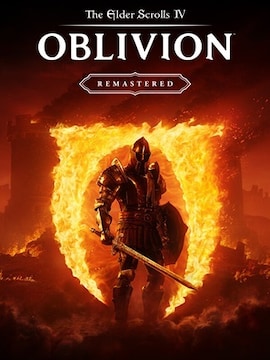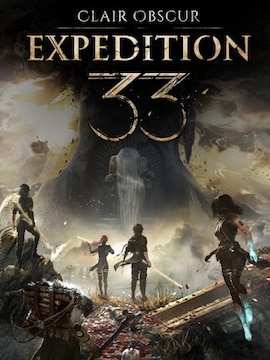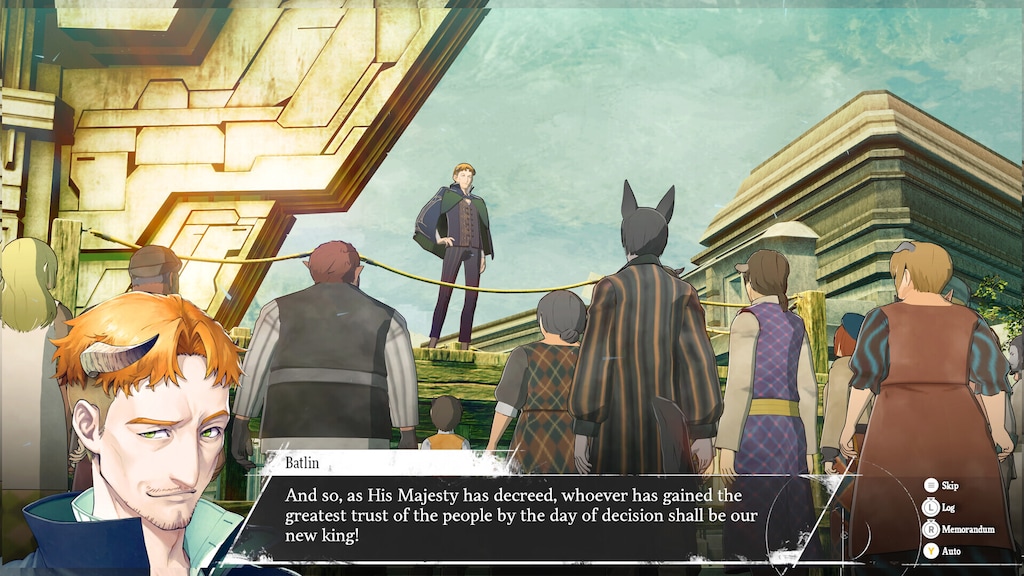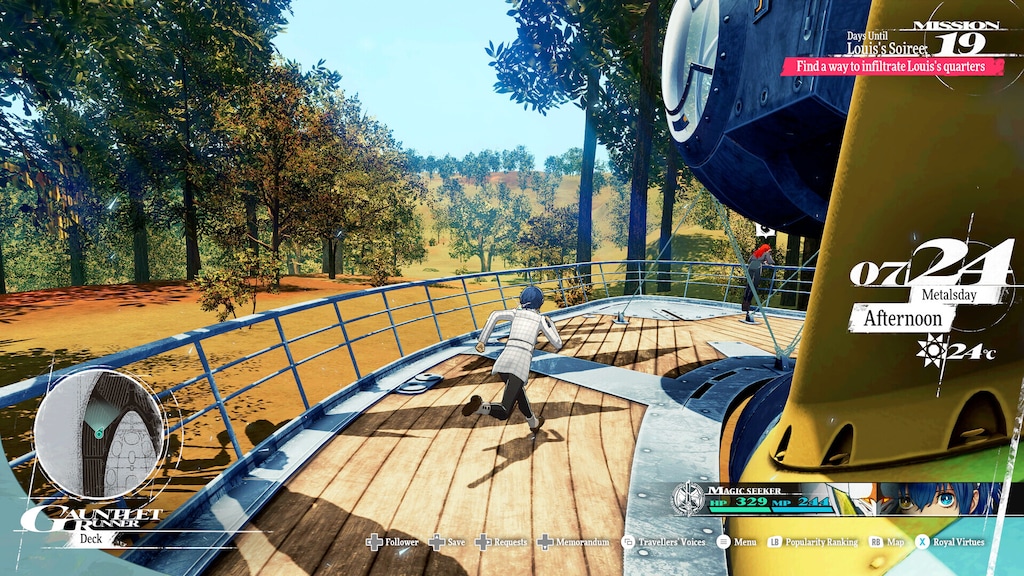ATLUS’ newest title, Metaphor: ReFantazio, has received several prestigious awards during the 2024 game award season, including Best RPG, Best Narrative and Best Art Design. It was also chosen as IGN’s Game of The Year.
It’s no surprise that interest in the title and curiosity about ATLUS’ previous titles is growing. In this article, we’ll analyse the similarities between Metaphor: ReFantazio and Shin Megami Tensei V.
| Game | Release | Genre | Developer | |
|---|---|---|---|---|
 | Shin Megami Tensei V Vengeance | 2024-06-14 | jRPG | Atlus |
 | Metaphor Refantazio | 2024-10-11 | jRPG | Studio Zero |
Different approaches to narrative
Most ATLUS fans agree that Shin Megami Tensei games are much more combat- and exploration-oriented than Metaphor: ReFantazio.
That is not to say that combat and exploration are neglected in Metaphor. However, the narrative is a much more central element of the whole than it is in Shin Megami Tensei V, even with the new Canon of Vengeance storyline added by the Vengeance upgrade.
World-building and lore
Metaphor: ReFantazio is ATLUS’ first attempt at a high fantasy setting in a turn-based RPG. Its world is riddled with tribe-based prejudices and inequality. The protagonist aims to ensure that the recently deceased king is succeeded by a worthy candidate, one capable of changing the country into a better place.
Shin Megami Tensei V starts in modern-day Tokyo, but the main character is quickly transported to a post-apocalyptic version of the city, destroyed during a war between angels and demons and inhabited by demons from different belief systems, myths, and folklore. In a similar vein to Metaphor, the story is centred around an empty throne and the struggle between those who wish to sit on it.
In this case, the throne once belonged to the Creator god, slain by Lucifer.
A familiar combat system
Shin Megami Tensei V and Metaphor: ReFantazio both feature a turn-based combat system with weakness exploitation and press-turn mechanics.
While both games add some unique twists, the core combat mechanics are almost identical:
- Allies and enemies have different elemental affinities;
- Characters can use different attack types;
- You typically start a combat round with up to four turn icons, depending on your party size;
- Actions in combat usually use up a full icon
- If you crit or successfully target an opponent’s weakness, your attack only uses half of a turn icon.
- Half-icons can be used as normal turns, but can’t be halved again.
Overworld combat – or lack thereof
There is no real overworld combat in Shin Megami Tensei V. Yes, the Nahobino must avoid being hit by demons during exploration and starts battles by hitting them with his sword.
But apart from deciding which party gets to act first in the turn-based battles, the real-time sword-swinging serves no further purpose.
In contrast, Metaphor: ReFantazio features a more robust real-time combat system, and the overworld fights serve as more than just tiebreakers for the first round. You can also utilise different move sets, so you’re not necessarily stuck with a sword.
Low-level enemies can be defeated in overworld without triggering turn-based combat, which means you don’t have to repeat the same, easy encounter for the hundredth time.
When it comes to enemies of a similar or higher level, fighting them in the overworld affects the turn-based fight against them.
If you deal enough damage to deplete their stamina bar, they will start the battle with a chunk of HP missing and will be stunned for an entire round.
On the other hand, the first round will go to the enemy if you’re the one who gets beat up. If you lose all your HP in the overworld, that’s a game over.
When facing a really powerful foe, it might be prudent to trigger the turn-based battle without engaging in overworld combat.
Demons – gotta catch ‘em all
The enemies in Shin Megami Tensei V are demons – but you can convince them to switch to your side via negotiations.
Recruited demons can be selected as party members, and the Nahobino can use demon essence to channel their skill sets and elemental affinities.
All the demons you ever possessed are recorded in your Compendium and can be re-summoned for some Macca currency.
You can also fuse two or more demons to create a new, often more powerful, one. In total, you can gather 276 demons throughout your playthrough.
Becoming an archetypal hero
In Metaphor: ReFantazio, you’ll be using archetypes instead of demons.
Like demons, they possess unique skill sets and affinities, and equipping an archetype is similar to the Nahobino channelling a demon’s essence to change his skill set.
However, the archetypes are not separate entities that populate your party. They are not collected via combat and cannot be fused. Instead, you unlock one of the 14 base archetypes by forging a bond with the associated character.
Developing that bond can unlock their adept and elite versions, the total number of archetypes being 46.
When an archetype is unlocked, it’s available for every party member – but each character has to study it separately, which costs MAG – one of the currencies.
Once a character has studied an archetype, they can freely switch to it at any time – except during turn-based combat.
Friendship is Magic
Bonds are an important element of Metaphor: ReFantazio, one absent from Shin Megami Tensei V.
The Vengeance upgrade added the option to chat with your allied demons and some other NPCs, but that’s as much interaction with your allies as you get.
Metaphor: ReFantazio features time-management gameplay absent from SMT. Whenever you spend time with a follower, you level up their bond.
Every level reveals another part of their personal story arc. You also gain unique gameplay benefits, ranging from new archetypes to store discounts.
Will I enjoy one if I like the other?
The answer, as usual, is: that depends. If you’re coming from Metaphor and looking for a similarly rich story, Shin Megami Tensei V might disappoint.
This is especially true if you choose the Canon of Creation. Fortunately, the Canon of Vengeance was added to improve the original’s lacklustre storytelling. However, a more natural choice for those looking for a game as story-heavy as Metaphor would be the Persona series.
If the thing you enjoyed most was the turn-based combat of either of the titles, then you should feel at home playing the other. Metaphor ReFantazio’s combat system is very similar to Shin Megami Tensei V’s.
As for the difficulty, your mileage may vary. Most players seem to agree that even the hardest boss in Metaphor can’t hold a candle to Shin Megami Tensei’s optional Superbosses. Other than that, there is no clear consensus on which of the games is more difficult.
Now you know (more or less)
Hopefully, this comparison made the similarities and differences between Shin Megami Tensei V and Metaphor: ReFantazio clearer. Which is the winner of your personal JRPG showdown? Or is it a tie? One thing is sure – you won’t know for sure unless you play them both!









